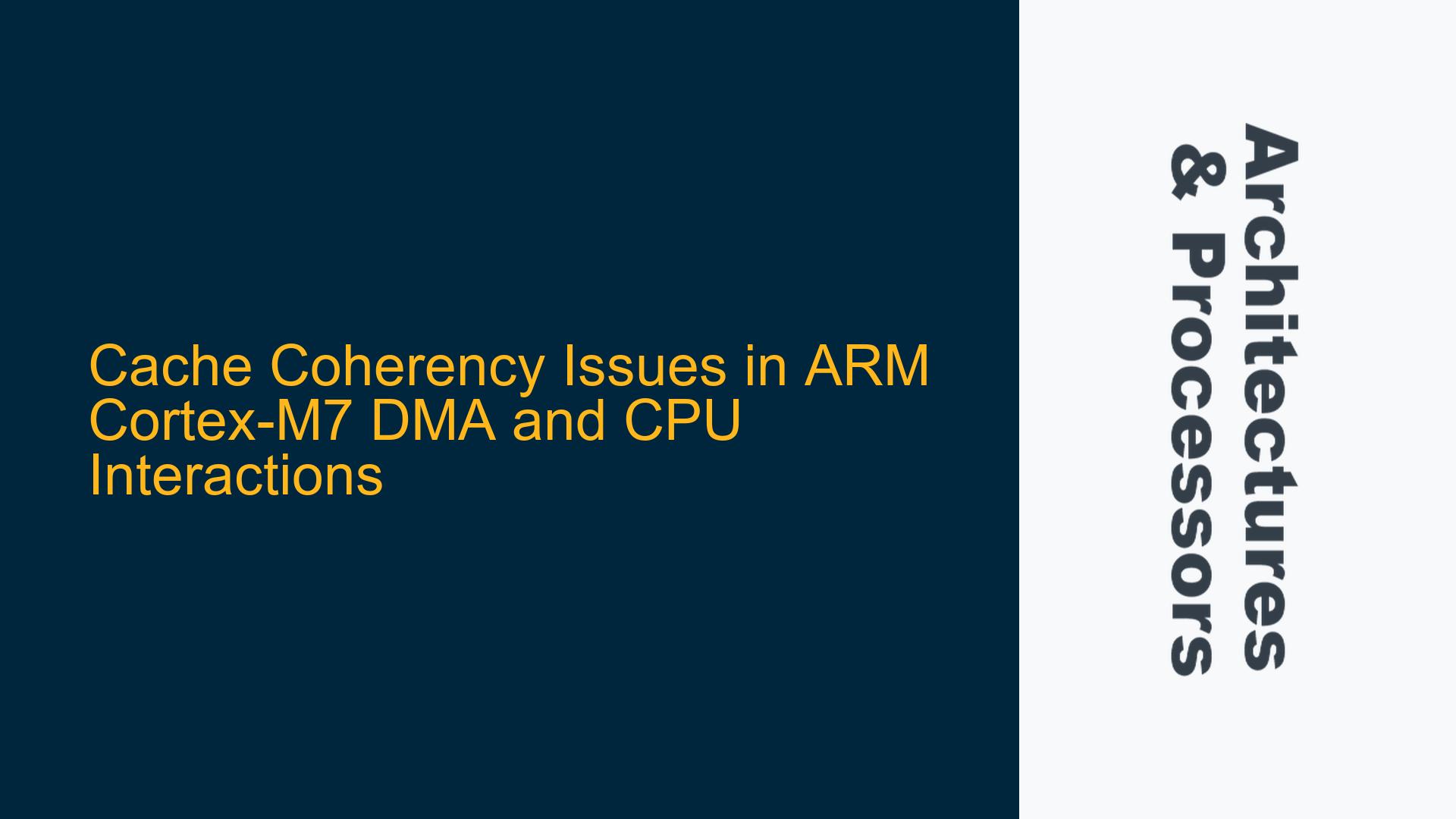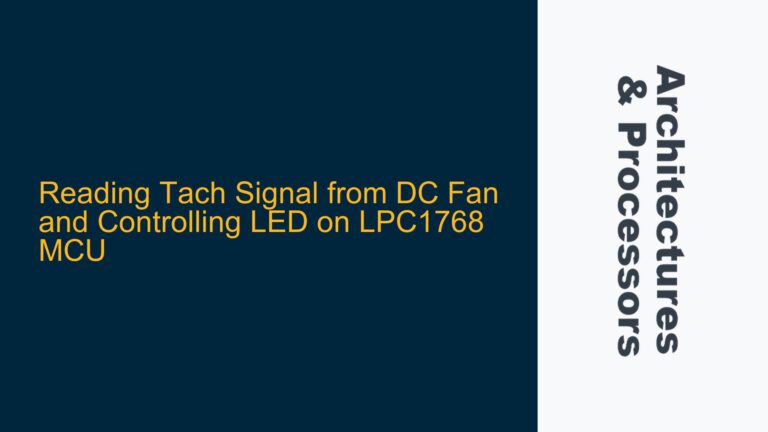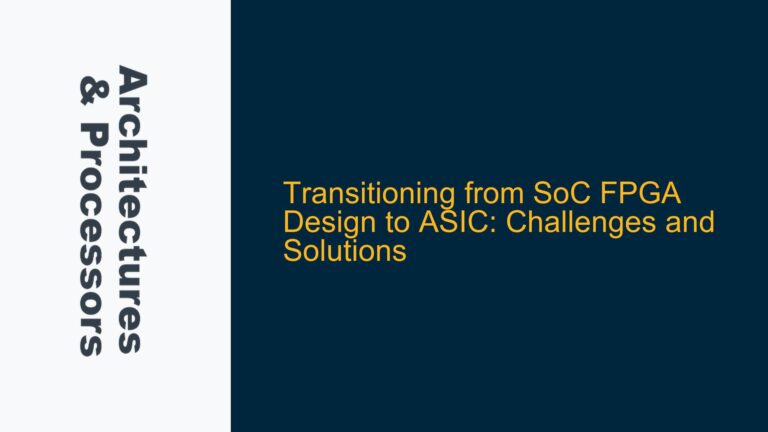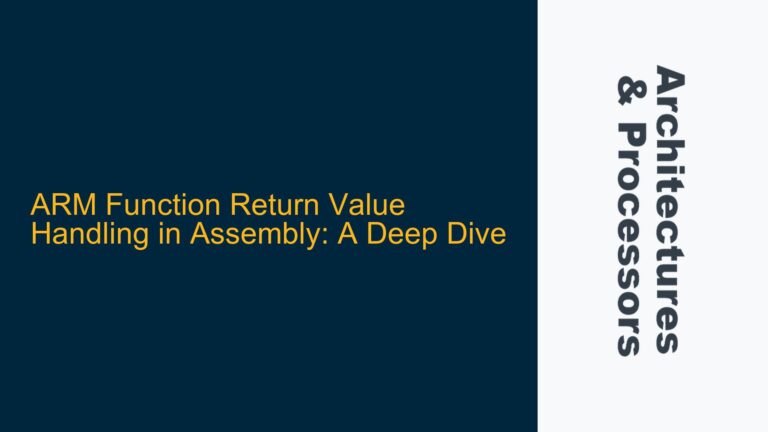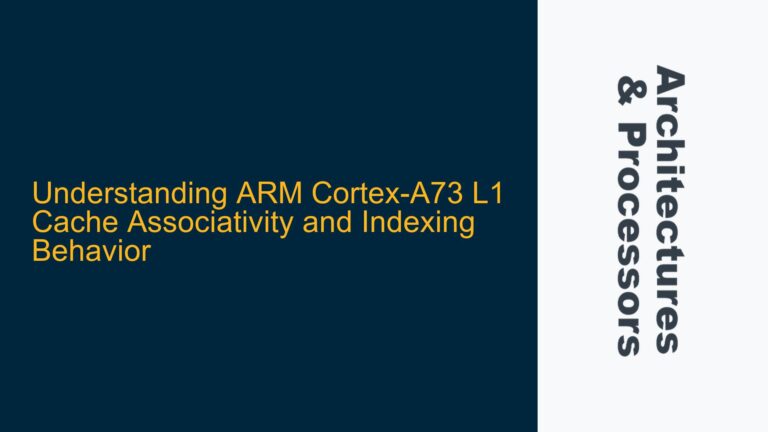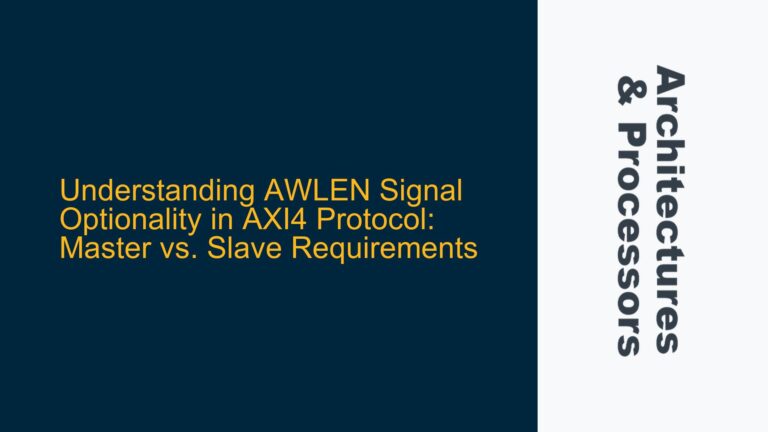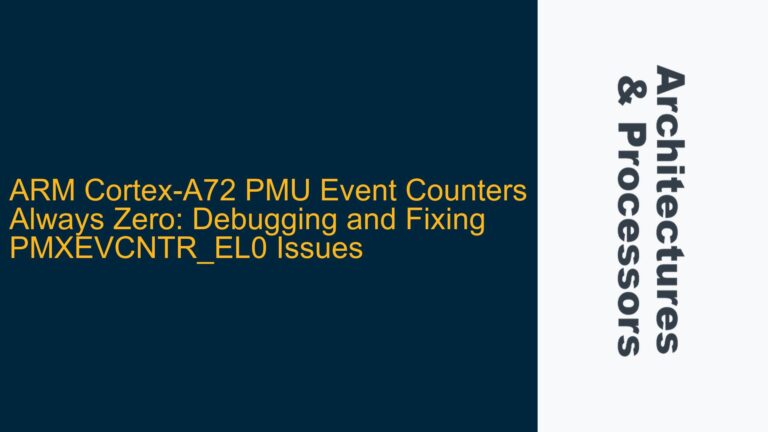ARM Cortex-M7 Cache Line Overwrite During DMA Transfers
The ARM Cortex-M7 processor, with its advanced memory system and cache architecture, is widely used in embedded systems for its high performance and efficiency. However, when integrating Direct Memory Access (DMA) controllers with the Cortex-M7, developers often encounter subtle cache coherency issues that can lead to data corruption or unexpected behavior. One such issue arises when the CPU and DMA device access memory locations that map to the same cache line. Specifically, the act of cleaning a cache line by the CPU can inadvertently overwrite recent changes made by the DMA device, leading to data inconsistency.
In a typical scenario, the CPU and DMA device may access two memory locations, x and y, which reside in the same cache line. The sequence of operations—such as CPU reads, DMA writes, and cache line cleaning—can result in the DMA device observing stale data. This issue is particularly problematic in systems where cacheable memory is shared between the CPU and DMA devices, as the cache coherency mechanisms may not automatically handle such interactions.
Understanding the root cause of this issue requires a deep dive into the ARM Cortex-M7 cache architecture, the behavior of cacheable memory, and the implications of cache line cleaning operations. By examining the sequence of events and the underlying hardware mechanisms, we can identify the conditions under which data corruption occurs and develop strategies to mitigate these issues.
Cache Line Contention Between CPU and DMA in Write-Back Cacheable Memory
The ARM Cortex-M7 processor employs a write-back cache policy for normal, cacheable memory regions. In this policy, writes to memory are initially stored in the cache and only written back to main memory when the cache line is evicted or explicitly cleaned. This policy improves performance by reducing the number of memory writes, but it introduces complexity when multiple bus masters, such as the CPU and DMA devices, access the same memory locations.
When the CPU reads a memory location, the corresponding cache line is fetched from main memory and marked as valid in the cache. If the DMA device subsequently writes to a different location within the same cache line, this change is not automatically reflected in the CPU’s cache. When the CPU later writes to another location in the same cache line, the entire cache line is marked as dirty. If the CPU then cleans the cache line, the dirty data is written back to main memory, potentially overwriting the changes made by the DMA device.
This behavior is a direct consequence of the write-back cache policy and the lack of automatic cache coherency between the CPU and DMA devices. The CPU’s cache is unaware of the DMA’s modifications to memory, leading to a situation where the DMA device’s changes are lost when the cache line is cleaned.
Implementing Cache Management Strategies to Prevent Data Corruption
To prevent data corruption in systems where the CPU and DMA devices share cacheable memory, developers must implement explicit cache management strategies. These strategies ensure that the CPU and DMA devices have a consistent view of memory, even when accessing the same cache line.
One approach is to use non-cacheable memory for data structures that are frequently accessed by both the CPU and DMA devices. By placing descriptors and other shared data structures in non-cacheable memory, developers can avoid the complexities of cache coherency altogether. However, this approach may incur a performance penalty due to the increased memory access latency.
Another approach is to carefully manage cache lines to ensure that each descriptor or data structure resides in its own cache line. This prevents cache line contention between the CPU and DMA devices, as each entity accesses a separate cache line. Additionally, developers can use cache maintenance operations, such as cache invalidation and cleaning, to ensure that the CPU’s cache reflects the latest changes made by the DMA device.
When using cache maintenance operations, it is crucial to perform them at the right time and in the correct sequence. For example, before the CPU accesses a memory location that may have been modified by the DMA device, the corresponding cache line should be invalidated to ensure that the CPU fetches the latest data from main memory. Similarly, after the CPU modifies a memory location that may be accessed by the DMA device, the corresponding cache line should be cleaned to ensure that the changes are written back to main memory.
In some cases, developers may need to use data synchronization barriers to ensure that cache maintenance operations are performed in the correct order. Data synchronization barriers prevent the CPU from executing subsequent instructions until all previous cache maintenance operations have completed, ensuring that the cache is in a consistent state.
By implementing these cache management strategies, developers can prevent data corruption and ensure that the CPU and DMA devices have a consistent view of memory. These strategies require careful consideration of the system’s memory layout, the access patterns of the CPU and DMA devices, and the timing of cache maintenance operations. However, when implemented correctly, they can significantly improve the reliability and performance of systems that integrate the ARM Cortex-M7 processor with DMA devices.
Detailed Analysis of Cache Line Overwrite Scenarios
To fully understand the cache line overwrite issue, let’s analyze the sequence of events in detail:
-
Initial State: The memory locations
xandyare initialized tox1andy1, respectively. The cache line containing these locations is initially invalid, meaning it is not present in the CPU’s cache. -
CPU Reads
y: When the CPU readsy, the cache line containing bothxandyis fetched from main memory and loaded into the cache. The cache line is marked as valid, and the CPU now has a copy ofx = x1andy = y1in its cache. -
DMA Writes
x: The DMA device writesx = x2to main memory. However, this change is not reflected in the CPU’s cache, as the cache line is still marked as valid and contains the stale valuex = x1. -
CPU Writes
y: The CPU writesy = y2to its cache. Since the cache line is already valid, the write is performed in the cache, and the cache line is marked as dirty. The cache now containsx = x1andy = y2. -
CPU Cleans the Cache Line: When the CPU cleans the cache line, the dirty data is written back to main memory. The cache line is written back with
x = x1andy = y2, overwriting the change made by the DMA device (x = x2).
As a result, from the DMA device’s perspective, x appears to have reverted to its original value (x1), even though the DMA device had previously updated it to x2. This scenario illustrates the potential for data corruption when the CPU and DMA devices access the same cache line without proper cache management.
Cache Coherency Mechanisms and Their Limitations
The ARM Cortex-M7 processor includes several cache coherency mechanisms designed to maintain consistency between the CPU’s cache and main memory. However, these mechanisms have limitations when it comes to interactions with DMA devices.
One such mechanism is the cache coherency protocol, which ensures that multiple CPUs in a multi-core system have a consistent view of memory. However, this protocol does not extend to DMA devices, which operate independently of the CPU’s cache coherency mechanisms. As a result, DMA devices can modify memory without the CPU’s cache being aware of these changes.
Another mechanism is the cache maintenance operations, which allow the CPU to explicitly manage its cache. These operations include cache invalidation, cleaning, and flushing, which can be used to ensure that the CPU’s cache reflects the latest changes made by DMA devices. However, these operations must be used correctly and at the appropriate times to avoid data corruption.
The lack of automatic cache coherency between the CPU and DMA devices means that developers must take extra care when designing systems that involve shared memory access. This often involves implementing manual cache management strategies, as discussed earlier, to ensure that the CPU and DMA devices have a consistent view of memory.
Best Practices for Cache Management in ARM Cortex-M7 Systems
To avoid cache line overwrite issues and ensure reliable operation in ARM Cortex-M7 systems, developers should follow these best practices:
-
Use Non-Cacheable Memory for Shared Data Structures: Whenever possible, place data structures that are accessed by both the CPU and DMA devices in non-cacheable memory. This eliminates the need for cache management and ensures that both entities have a consistent view of memory.
-
Align Data Structures to Cache Line Boundaries: If shared data structures must reside in cacheable memory, ensure that each structure is aligned to a cache line boundary. This prevents cache line contention between the CPU and DMA devices, as each entity accesses a separate cache line.
-
Perform Cache Maintenance Operations at the Right Time: Use cache invalidation and cleaning operations to ensure that the CPU’s cache reflects the latest changes made by DMA devices. Invalidate the cache before the CPU accesses memory that may have been modified by the DMA, and clean the cache after the CPU modifies memory that may be accessed by the DMA.
-
Use Data Synchronization Barriers: Insert data synchronization barriers after cache maintenance operations to ensure that the operations have completed before proceeding. This prevents the CPU from accessing stale data or overwriting DMA changes.
-
Monitor Cache Performance: Use performance monitoring tools to track cache hits, misses, and maintenance operations. This can help identify potential cache coherency issues and optimize cache management strategies.
By following these best practices, developers can mitigate the risks associated with cache line overwrite issues and ensure that their ARM Cortex-M7 systems operate reliably and efficiently.
Conclusion
Cache coherency issues in ARM Cortex-M7 systems, particularly when integrating DMA devices, can lead to subtle and challenging problems such as data corruption. Understanding the behavior of write-back cacheable memory, the limitations of cache coherency mechanisms, and the importance of proper cache management is crucial for developing reliable embedded systems.
By carefully managing cache lines, using non-cacheable memory for shared data structures, and performing cache maintenance operations at the right time, developers can prevent cache line overwrite issues and ensure that both the CPU and DMA devices have a consistent view of memory. These strategies, combined with a thorough understanding of the ARM Cortex-M7 cache architecture, enable the development of high-performance and reliable embedded systems.
